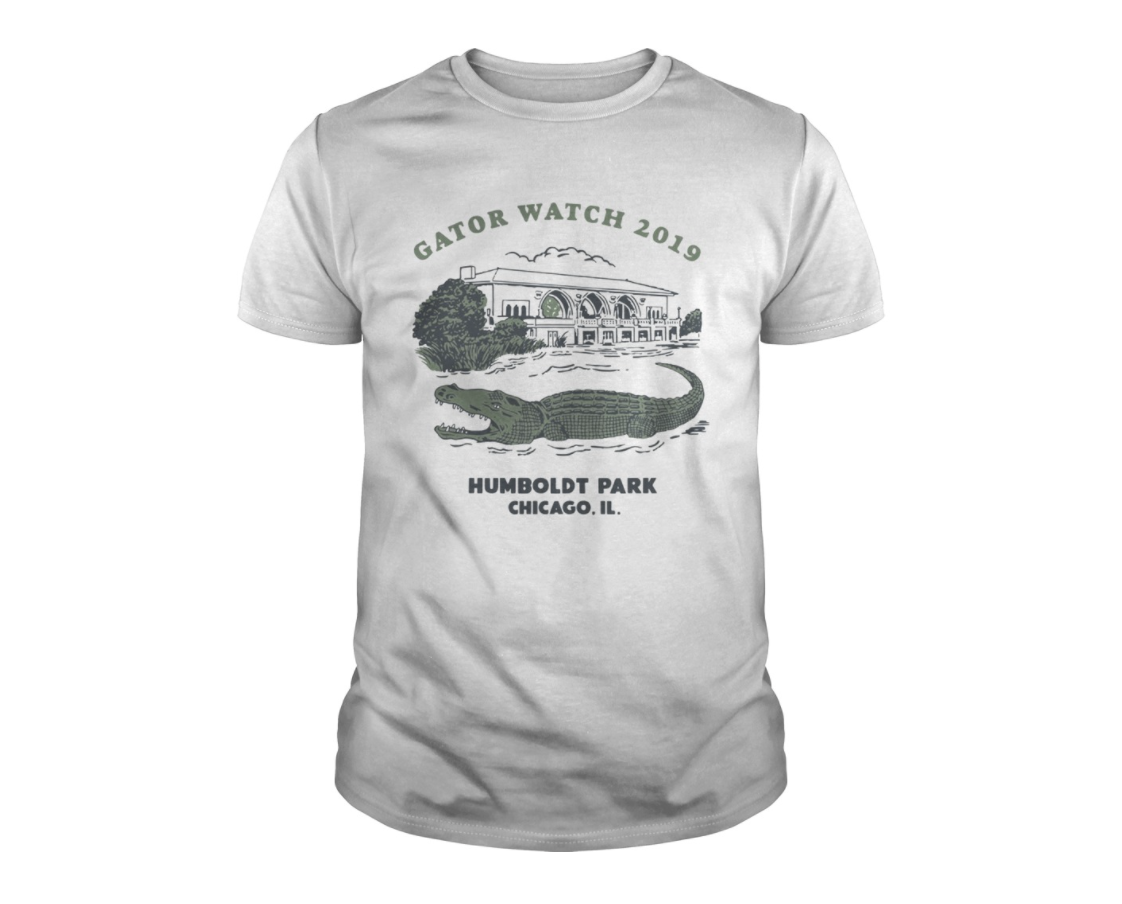Chance the Snapper went viral, and Block Club Chicago raked in $100,000
In our new podcast, you’ll hear how a rare alligator sighting in west Chicago led to a DIY six-figure T-shirt

In our new podcast, you’ll hear how a rare alligator sighting in west Chicago led to a DIY six-figure T-shirt windfall.
Gator Watch officially began on July 9, 2019, when the nonprofit newsroom Block Club Chicago broke the news of a rare alligator sighting in west Chicago.
Thirty stories and 4,000 T-shirts later, Gator Watch went down not only as a viral content series, but also one of Block Club’s most successful fundraising campaigns ever, with readers snapping up more than $100,000 in merchandise.
In our pilot episode of News Guest — a monthly podcast featuring practical advice from entrepreneurs who are changing the news business — Candice Fortman talks with Block Club Chicago’s Stephanie Lulay and Maple Walker Lloyd about the story behind Gator Watch, and the lessons they’ve learned about how to turn merchandise into a healthy revenue stream.
You can subscribe to News Guest and listen to future episodes on Spotify, Breaker, or wherever you get your podcasts.
Inspired to learn more about merchandise and how your newsroom can monetize it? Send us your questions about merch strategy and logistics, and we’ll get them answered in the News Entrepreneur Community Slack group on Monday, April 26 at noon PT / 3pm ET.
Meantime, here are a few highlights from Candice’s conversation with Stephanie and Maple:
1. The Gator Watch merch campaign came together fast — but not without some legwork.
Reporter Mina Bloom was first on the scene at Humboldt Park after an avid reader sent in a tip about the alligator sighting — and Block Club Chicago was the first news organization to break the story.
Quickly, it went gangbusters.
“People really got whipped up into this frenzy about it, and it became this thing: Are we going to see the gator today? Is today going to be the day that they catch him?” Lulay said. “It really became the story of the summer.”
Block Club continued to report on the twists and turns of “Gator Watch,” as the saga became known, and with some help from its readers, the newsroom even gave the gator a nickname: “Chance the Snapper.”
That’s when Lulay and her colleagues decided to try capitalize on the story with a merch campaign — and because they already had relationships with a local artist and printing vendor, it only a took a matter of hours to get the T-shirts designed and start pre-selling them online.
“We’re not scared to try new things,” Lulay said. “[This one] came together very fast.”
2. Block Club Chicago saved money by keeping its supply chain local and managing order fulfillment in-house.
News organizations that sell merchandise online often partner with on-demand printing vendors to manage their orders and handle all the logistics of packing and shipping.
That approach can save time, but it also reduces the profit margin on each sale, which is one reason why Block Club Chicago decided to keep its supply chain entirely local.
A local artist designed the shirts, a local vendor printed them, Block Club reporters helped pack the T-shirts into bags, and co-founder Shamus Toomey made the trips to the post office to mail them away.
“That was one of the ways we were able to generate so much revenue,” Lloyd said, “because we did everything ourselves.”
Meanwhile, Block Club also reduced its financial risk by pre-selling the T-shirts before placing any orders.
“In a presale situation, our [only] upfront cost is what we agreed to pay the artist,” Lulay said. “We weren’t ordering anything from the company until we knew that sales were coming in.”
3. Block Club Chicago has a separate strategy for merch and subscription sales, but there’s plenty of overlap.
Like many newsrooms, Block Club occasionally gives away free merchandise as a perk for paying subscribers. (For example, new subscribers last fall received a special-edition tote bag as part of a campaign that helped Block Club surpass 15,000 paying supporters.)
But Block Club doesn’t let those subscriber giveaways detract from its online merch store — and its doesn’t treat subscribers as its only audience for merch campaings.
“There are people who buy T-shirts from us who aren’t subscribers,” Lulay said. [They just] thought ‘this is a cool T-shirt.’”
Another bonus of selling paid merch is that it offers a lower-cost option for readers to support your work.
“Somebody not being able to afford $59 a year for a subscription, but they may be willing to pay $15 or $20 for a T-shirt,” Lloyd said. “That may be the only way they can support us.”
Want to learn more about how Block Club Chicago and other LION members are earning revenue through merchandise? Send us your questions here, and we’ll answer them on Slack on Monday, April 26 at noon PT with this star-studded panel:
- Maple Walker Lloyd, Block Club Chicago
- Kevin Tierney, Burb Media / More Than the Curve
- Mariko Lochridge, LION Publishers
News Guest is a monthly podcast featuring practical advice from entrepreneurs who are changing the news business. You can subscribe on Spotify, Breaker, or wherever you get your podcasts.
Sign up for the weekly newsletter
Join the LION mailing list to get our weekly roundup of opportunities and resources for news entrepreneurs. View our most recent issues.
Related Articles
BoiseDev’s winning secret to selling newsletter ads: Only local news, only local ads
The site earns 60 percent of its advertising revenue through its high-open-rate email projects, in partnership with local ad agencies.
AI adoption: How Lede AI helps small publishers quickly generate content readers love
Helping news organizations leverage artificial intelligence with a tool that puts their readers and staff first
Social is down, newsletters are up: How audiences are finding LIONs in 2024
Changes to social media and search prompt publishers to shift strategy.
